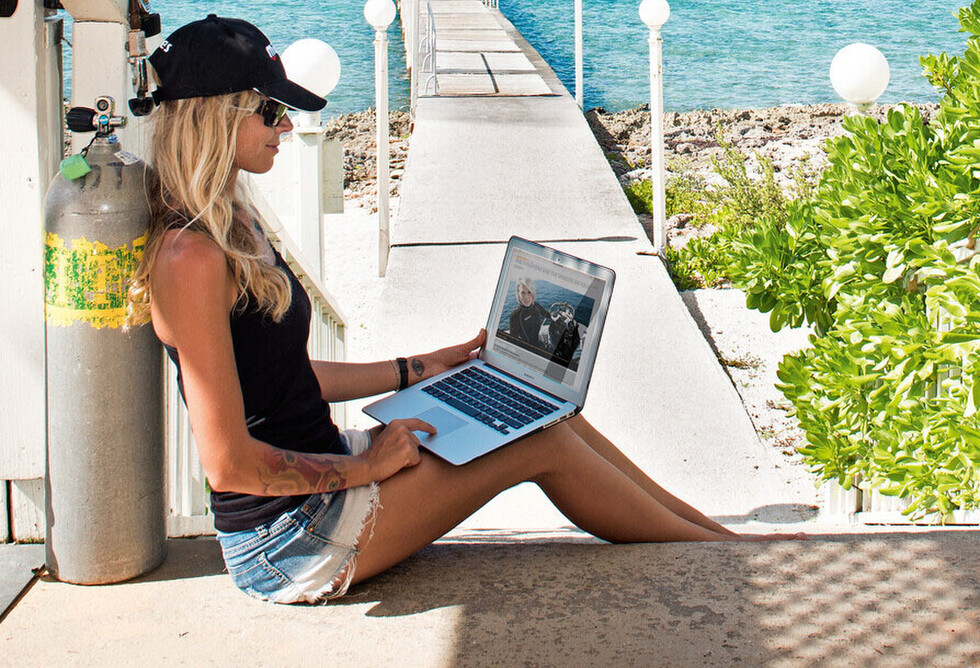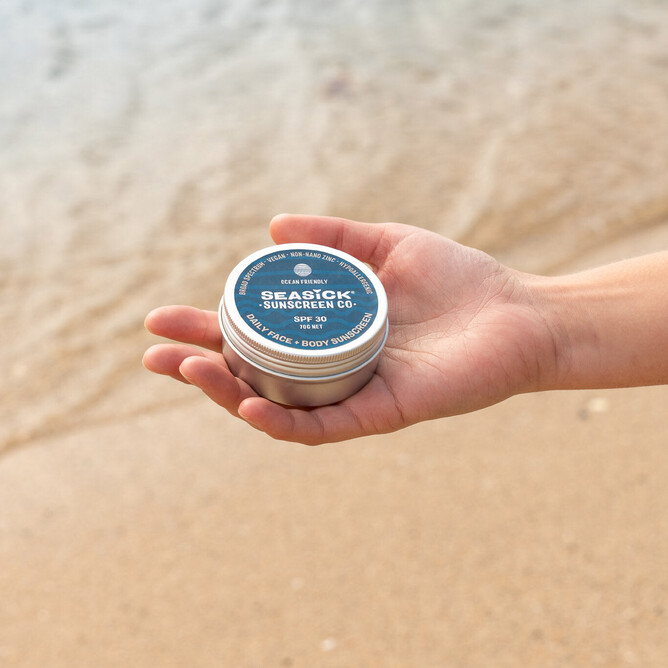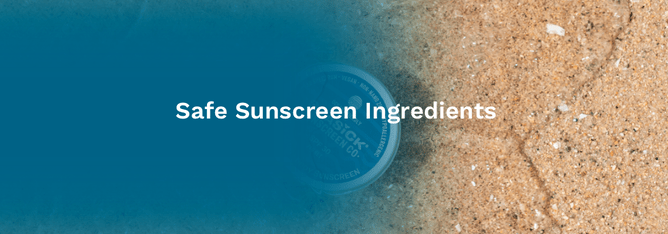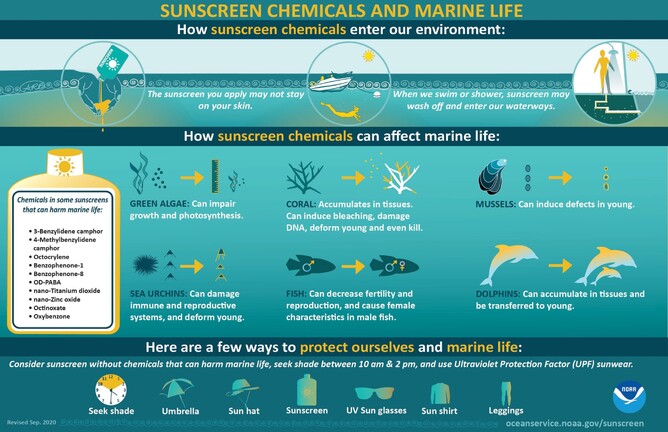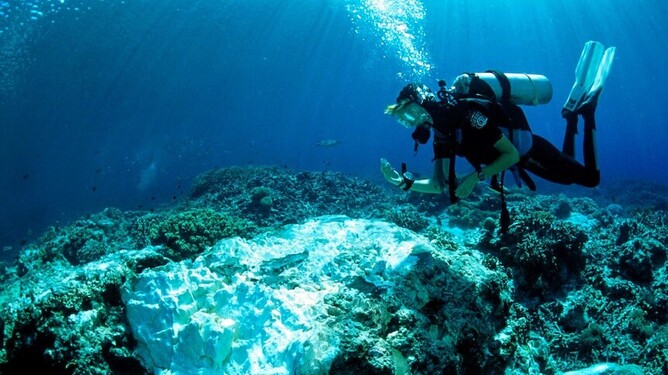Seasick sunscreen - good for you and the environment
Although our summer has certainly not been the best this year, we still expose ourselves to harmful UV even on those cloudier days so sunscreen protection is essential, especially when you're a diver. For us as diving instructors our office is the outdoors and we do take our own personnel health and safety very seriously especially exposing ourselves to the high UV levels that we can get here in Aotearoa.
For the last 4 or 5 months our dive professionals have been testing a new sunscreen product produced here in Aotearoa and we was so impressed, nope we didn't buy the company but we did become stockist/retailers for it.
In this blog we will look into the product a little more, who the manufacturers are and why its so important to choose your sunblock wisely.
Natalie Jones - Seasick Sunscreen Co founder
Seasick Sunscreen Co. was founded by Natalie Jones, and has been in operation since 2019. Nat describes herself as a red headed sun worshipper who loves surfing, hiking and diving so sunscreen is essential for protection. She is a passionate conservationist and this is the reason why she went on a mission to create an ocean friendly sunscreen product in plastic free packaging. She wanted to create a sunscreen product she could trust (to work) and without harming her own skin or the environment.
Nat did a lot of research into creating a product and initial turned her kitchen into a laboritory and began formulating her own sunscreen product. She figured out that "less is more" so her first sunscreen was made with just four ingredients. She then spent the next three years listening to customer feedback which enabled her to develop the product further from its initial concept. The Seasick Sunscreen company is based in Wellington and is a Kiwi made product.
So what's it made of?
The secret to the Seasick sunscreen receipt is a carefully selected list of naturally-derived ingredients that are safe for your body (including babies and children), and thankfully they do not use chemical UV filters and the sunscreen is plastic free. Here is what it is made of:
Non-nano zinc oxide
Using non-nano zinc oxide as the only active ingredient in the sunscreen is incredibly important! Why? Because it is the safest UV filter for both the environment and your skin.
Cocos Nucifera (Coconut) Oil
Moisturising, healing and non-greasy. What more do we need to say really.
Butyrospermum Parkii (Shea) Butter
Shea butter is obtained from the seeds of the Karite tree (Butyrospermum parkii) common in several African countries. This soft, pliant 'butter' is pressed from the seeds and then purified for use in soaps, cosmetics and toiletries. This product has been ethically produced and sustainably refined to yield a white and practically odourless butter, ideal for use in cosmetics.
Candelilla Cera
A wax produced from the Candellila tree. This is a vegan alternative to beeswax.
Caprylic/Capric Triglyceride
Caprylic/Capric Triglyceride is plant-based and gives the sunscreen its smooth yet non-greasy feel. It's 100% biodegradable and perfectly safe for use.
Polyglyceryl-2 Dipolyhydroxystearate
Made from plant oils such as coconut oil and castor oil, this ingredient is soothing on sensitive skin.
Polyglyceryl-3 Diisostearate
This is another plant-derived ingredient and is gentle and moisturising on the skin.
What you won't find in Seasick sunscreen:
Petrochemicals
Synthetic fragrance
Parabens
Nano-particles
oxybenzone
octinoxate
octisalate
octocrylene
homosalate
avobenzone
titanium dioxide
DID YOU KNOW - 14 million kilos of sunscreen end up in the world's ocean every year?
So why should I care what sunscreen I wear?
Healthy coral reefs in our oceans are one of the most valuable ecosystems on Earth. They provide billions of dollars in economic and environmental services, such as food, coastal protection, and tourism (including diving). However, coral ecosystems around the world face serious threats from a number of sources, including climate change, unsustainable fishing, land-based pollution, coastal development, disease, plastic trash (micro-plastics) and invasive species.
How sunscreen chemicals enter our environment:
When we swim or shower, sunscreen may wash off and enter our lakes and oceans.
Regular use of sunscreens has been shown to reduce the risk of sunburn and skin cancer, and slow photoaging of skin. The sunscreen you apply may not stay on your skin. When we enter the water the sunscreen we are wearing may wash off and enter our lakes and oceans, and can also enter bodies of water through wastewater such as from bathing or showering. As a result, the ultraviolet (UV) filters - the active ingredients in sunscreens that reduce the amount of UV radiation on skin - have been detected in the water, sediment, and animal tissues in aquatic environments. This is causing much damage to our ecosystems.
How sunscreen chemicals can affect marine life:
Green Algae: Can impair growth and photosynthesis.
Coral: Accumulates in tissues. Can induce bleaching, damage DNA, deform young, and even kill.
Mussels: Can induce defects in young.
Sea Urchins: Can damage immune and reproductive systems, and deform young.
Fish: Can decrease fertility and reproduction, and cause female characteristics in male fish.
Dolphins: Can accumulate in tissue and be transferred to young.
Chemicals in some sunscreens that can harm marine life include: Oxybenzone, Benzophenone-1, Benzophenone-8, OD-PABA, 4-Methylbenzylidene camphor, 3-Benzylidene camphor, nano-Titanium dioxide, nano-Zinc oxide, Octinoxate, Octocrylene
Below is an example of coral reef bleaching that can be attributed to use of some sunscreens.
Our test of Seasick sunscreen during diving
For us divers here in Aotearoa we can get burnt real bad, very often we can be outdoors all day and being in and around the water, the UV can reflect only making exposure worse. Its all too common to get the dreaded "mask tan" when having a big day out diving so sunscreen is really important to us.
We have been trialing Seasick sunscreen throughout the summer with all our professionals and dive students and here's what we found;
Firstly its pretty thick so only a small amount needs to be used, therefor a little goes along way. The easiest way we found of applying Seasick sunscreen was to scoop a small pea sized lump out of the tin and roll it in the fingers to soften it before applying. The tins of Seasick sunscreen come in 30 gram and 70 gram sizes so small enough to carry in your dive bag but don't be fooled by the small size, these really do last a long time and are great value for money.
One of the biggest issues divers can have with using sunscreen is that when applied to the face and head it can wash off and into the divers eyes, which stings real bad and can ruin a great dive. What we found with Seasick sunscreen is it doesn't sting at all, awesome! In fact it doesn't appear to wash off at all, probably due to the consistency, so you don't really need to keep applying throughout the day.
Also by using an ethical product (like Seasick sunscreen) during our training programs and dive operations is gives our professionals the opportunity to also use it as an educational tool and facilitates conversations about some of the threats our ecosystems are currently suffering from including use of damaging sunscreens. You would probably be surprised that most people have no idea that the sunscreen they use may be so damaging to the environment.
At Aotearoa Dive the only sunscreen product we use is now Seasick and we insist all our dive professionals use it to protect themselves when out diving, we think its awesome!
Come in-store to check it out for your self or you can find out more information online by CLICKING HERE.
Aotearoa Dive - We create environmentally conscious divers!
Join our movement today...
